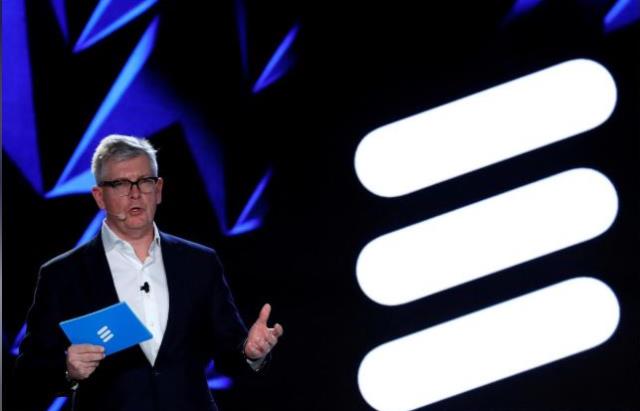Ericsson CEO Borje Ekholm today said the telecom network maker is a leader in 5G network market with 78 commercial 5G agreements with unique operators and 24 live 5G networks on four continents.

“We saw leading operators switch on their 5G networks. We are tracking well towards our targets for 2020 and 2022, but most importantly, we are making progress towards building a stronger company long term,” Borje Ekholm said.
Nokia on January 9 said it reached 63 commercial 5G contracts worldwide, positioning it as a global leader in the delivery of end-to-end 5G solutions.
Finland-based Nokia works with customers such as AT&T, KDDI, Korea Telecom, LG Uplus, NTT Docomo, Telefonica O2, SK Telecom, SoftBank, Sprint, Saudi Telecom (STC) T-Mobile US, Verizon, Vodafone Italy and Zain Saudi Arabia.
“This milestone highlights the quality and customer confidence in our 5G portfolio and we expect this to continue this year with the addition of many more new deals,” said Tommi Uitto, president of Mobile Networks at Nokia, said in January.
Ericsson India
Ericsson’s India revenue touched SEK 9.08 billion in 2019 as compared with 8.43 billion in the previous year.
United States, China, Japan, India and Australia were the top five countries for Ericsson in terms of revenue contribution in 2019.
United States has generated 32 percent of its total sales in 2019 as against 29 percent in 2018. China’s revenue contribution was stable at 7 percent. Ericsson Japan contributed 4 percent of its total sales in 2019 as compared with 3 percent in 2018. Ericsson India generated stable sales at 4 percent. Australia’s sales contribution was 3 percent of total sales in 2019 as against 4 percent in 2018.
Ericsson global sales
Ericsson sales rose 1 percent to SEK 66.4 billion in Q4 2019 and increased 4 percent to SEK 227.2 billion in 2019.
Ericsson faced reduction in sales in North America. Ericsson, however, achieved sale growth in markets such as the Middle East and North East Asia.
Operating income improved to SEK 6.5 billion. Gross margin was 37.1 percent vs 32 percent in Q4 2019.
Ericsson said its performance during 2019 puts the telecom network maker on track to reach its targets for 2020 and 2022.
“Our focused strategy with increased investments in R&D combined with operational efficiency is paying off. We have regained technology leadership, recovered previously lost ground in several markets and improved the financial results,” Borje Ekholm said.
Research firm Dell’Oro Group today said 5G NR RAN investments will surpass $100 billion. 5G NR small cell market will approach 10 percent to 20 percent of overall 5G NR market. Global macro and small cell transceiver shipments will approach 0.7 billion. Millimeter Wave 5G NR will account for one sixth of overall small cell investments.
“We expect RAN market to advance at a healthy pace over the near-term accommodating an intense 5G Capex envelop before growth tapers off in the outer part of the forecast period resulting in a flat CAGR between 2019 and 2024,” Stefan Pongratz, analyst with the Dell’Oro Group, said.
Ericsson said its operating income was impacted by increased operating expenses. The hike is related to the Kathrein business acquisition, increased investments in digitalization and added resources to strengthen security as well as our Ethics and Compliance program.
North America
Networks gross margin was 41 percent including effects from contracts which reflects the strong business fundamentals. Due to the uncertainty related to the proposed merger between T-Mobile and Sprint, Ericsson faced slowdown in North American business in Q4, resulting in North America having the lowest share of total sales for some time.
Ericsson said it is still too early to assess possible volumes and price levels for the expected deployment of 5G in China, and Ericsson expects that the initial challenging margins will shift to positive margins over the lifespan of the contracts.
Baburajan K





